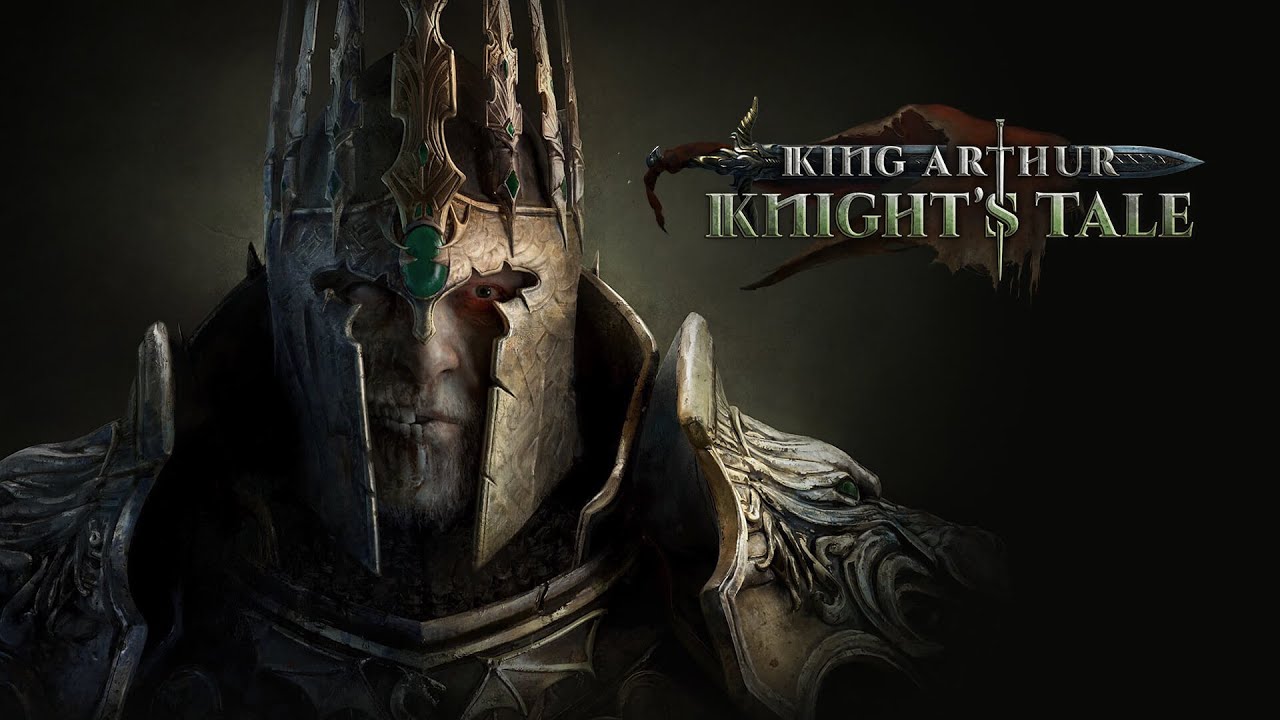Neocore Games, the studio behind Warhammer 40,000: Inquisitor and The Incredible Adventures of Van Helsing, are taking their grimdark style of tactical gameplay to the Middle Ages this March. Players will build their castle, manage their court, and set out on quests to save Britain from King Arthur. Yes, you read that right – despite his name being in the title, the legendary King Arthur is the bad guy in this one.
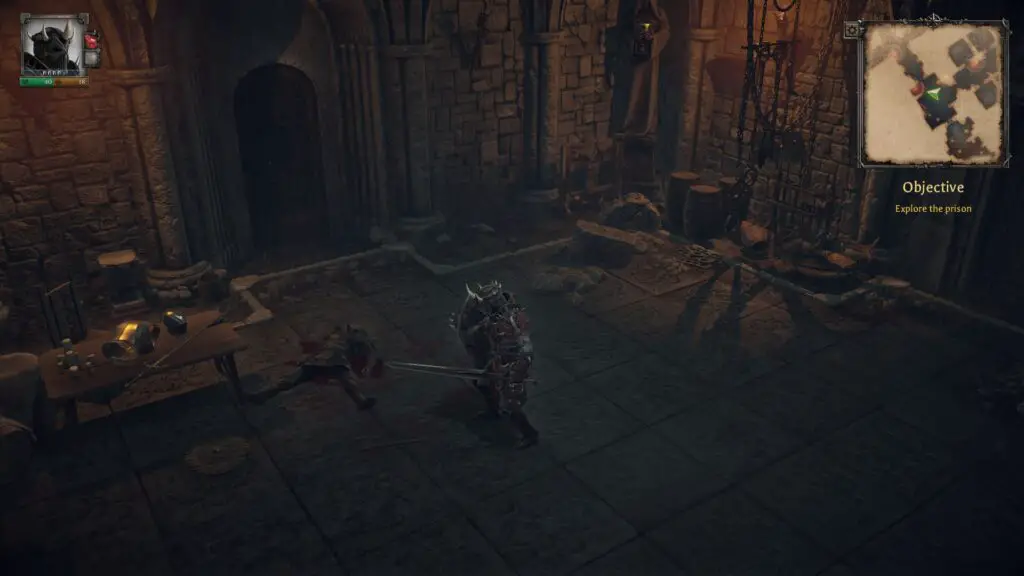
King Arthur: Knight’s Tale can be considered a sequel to the famous legend. In the famous tale, the knight Sir Mordred (who in some tellings is Arthur’s illegitimate son, in some his nephew, and in some unrelated to the king at all) leads a rebellion that culminates in a great battle. Arthur and Mordred slay one another in single combat, and Arthur’s body is taken to the mystical island of Avalon to await the day when he will return to rule over Britain once more.
At the beginning of the game, it’s revealed that Arthur has returned not as the hero of destiny but as an undead monster bent on destruction. Having no other choice, the Lady of the Lake resurrects Mordred, reasoning that if the traitor killed Arthur once he might be able to do it again. As Mordred, the player must gather the remaining Knights of the Round Table who wander Avalon in a state between life and death, building a force capable of ending Arthur’s threat.

Dangerous Quests
The combat in King Arthur: Knight’s Tale will be familiar to anyone who’s played a grid-based tactical game before. Each member of your small squad of knights has an array of unique skills that you’ll need to use intelligently to succeed; Sir Balan, for example, is a heavy frontline fighter who specializes in hitting single opponents with devastating blows, while his brother Sir Balin is a sneakier fighter who sets traps and lurks in hiding for an ambush.
Each knight has their own pool of Action Points, but roughly half of these can only be used for movement. This makes charging into battle a risky proposition as the side that moves the least will get more actions. It’s generally better to find a favorable position and let the enemy come to you, moving only to reposition for flanking. The presence of ranged enemies can throw a wrench in this strategy, so some calculated risks will be necessary throughout any given skirmish.
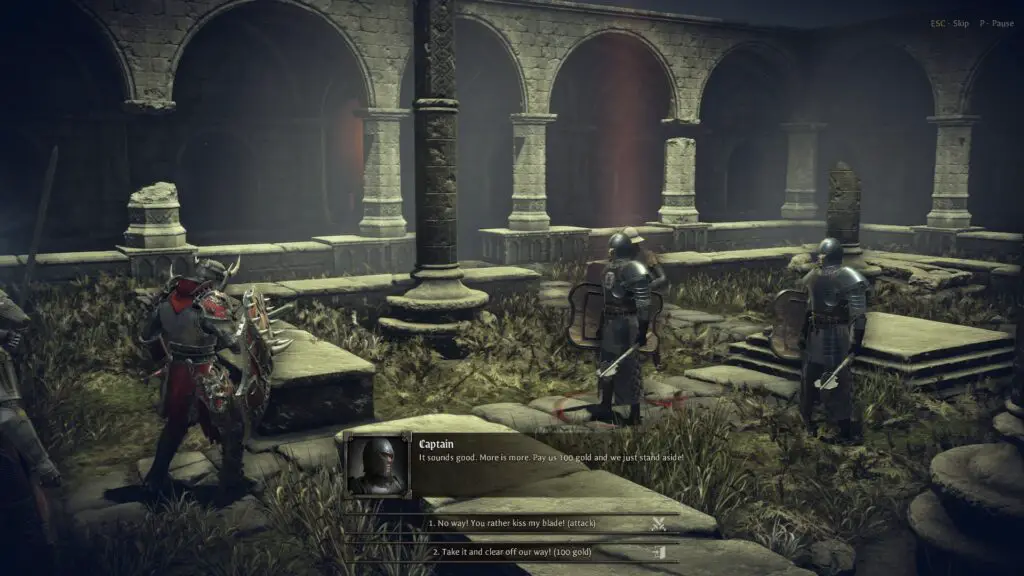
Between fights, your party can freely explore the map in search of loot. Each map also has campfires and shrines scattered throughout, which are essential for survival. Resting at a campfire allows you to restore half of each character’s depleted Hit Points or Armor, but not both. Since each campfire can only be used once, how and when to camp is an important decision to make in the field. Shrines allow one knight in your party to pray, earning them a bonus – or, rarely, a penalty. A sufficiently learned knight in your party can identify the properties of a shrine before using it, but they can also get the identification wrong. Each shrine is a roll of the dice, and they won’t have the same properties on each playthrough so you’ll always be gambling when you decide to use one.
While exploring, you also may happen upon places where the enemy have fortified themselves. In these instances, you can explore the perimeter of the battlefield before entering, discovering more deployment zones and potentially getting a better starting position against an entrenched foe. In most cases it’s still best to keep your team together instead of trying to deploy one to two knights at each starting point – a lone knight usually returns to Camelot in a coffin.

The health and armor system of King Arthur: Knight’s Tale is a major factor in gameplay and lends itself well to the long-term campaign. Each knight has two health pools; Hit Points are depleted first and can be restored with healing potions and campfire breaks. They are fully replenished at the end of a mission as long as the knight survives. Once a character’s hit points are gone, they start losing Vitality. Vitality is much harder to heal – typically shrines are the only thing that can do so in the field, and getting Vitality back at Camelot usually means sitting out one or more quests. If a knight loses all their Vitality, they die – permanently. Furthermore, the lower a knight’s Vitality drops the more susceptible they are to physical ailments and permanent injuries.
Many knights (the front-liners, anyway) have Armor that can be used to mitigate incoming damage. Armor directly reduces the amount of damage taken, but a sufficiently hard hit or a strike from a piercing weapon causes Armor to degrade. Even the tankiest character will eventually succumb to a sustained onslaught, and having a single character hold off a horde of enemies is a sure-fire way to get them maimed or killed… even if it’s the only option in a desperate situation. Repairing the team’s Armor at a campfire is all but required before facing a map’s boss.
The Weight Of The Crown

Between quests, Mordred will need to see to the affairs of Camelot – recruiting knights, assigning court titles, and building facilities. You’ll receive some Gold and Building Materials after each quest; Gold is used to purchase new equipment (in the form of runes and sigils to enhance the heirloom arms and armor each knight wields) and to erect buildings. You can only construct a building if you have sufficient Materials, so you’ll usually have some Gold leftover for item purchases and healing.
As your roster expands, your knights will have plenty to do when they aren’t away on quests. You can assign them to the Training Field to have them gain XP, grant them titles to earn yourself global bonuses, or have their injuries treated so they’re at their best when they’re needed. Each knight has Traits that affect how they interact with Camelot’s facilities; a charismatic character might be able to finagle better prices from the merchants as Court Chandler, while an ill-tempered knight might cost more to heal since the chirurgeons can’t stand them.
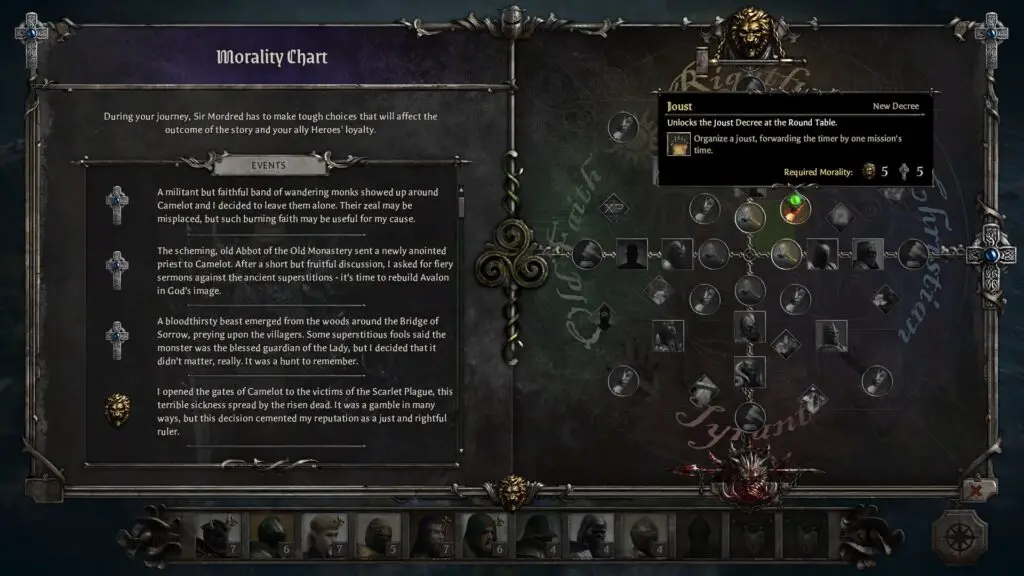
Many quests and map events include decisions to make – how to deal with captured criminals, how best to help the peasantry, or simply which of two bickering knights to side with. Most decisions will affect Mordred’s Morality Chart which tracks his overall alignment. The Morality Chart has two axes; the Y-axis tracks Mordred’s Rightfulness or Tyranny. Actions following established law – however harsh – are seen as Rightful, while actions that deviate too much from precedent (or are perceived as overly self-serving) are considered Tyrannical. The X-axis tracks Mordred’s religious affiliation – he can align himself with the ascendant Christian church or dedicate himself to Britain’s Old Faith.
Most knights have alignments of their own and will be more loyal to Mordred if his alignment matches theirs. Knights with a high Loyalty perform better in combat. Disloyal knights not only take a penalty, but the game suggests they may abandon Camelot or even defect to Arthur’s side as the campaign wears on. It’s not possible to please every knight who sits at the Round Table, so it’s best to pick an alignment (I chose Tyranny and Christianity for my first run) and stick to it. The further down each alignment axis you go, more bonuses will be unlocked including economic bonuses and quests to recruit powerful legendary characters including Lancelot, the Black Knight, and even Morgan le Fay.
Ready Your Blade
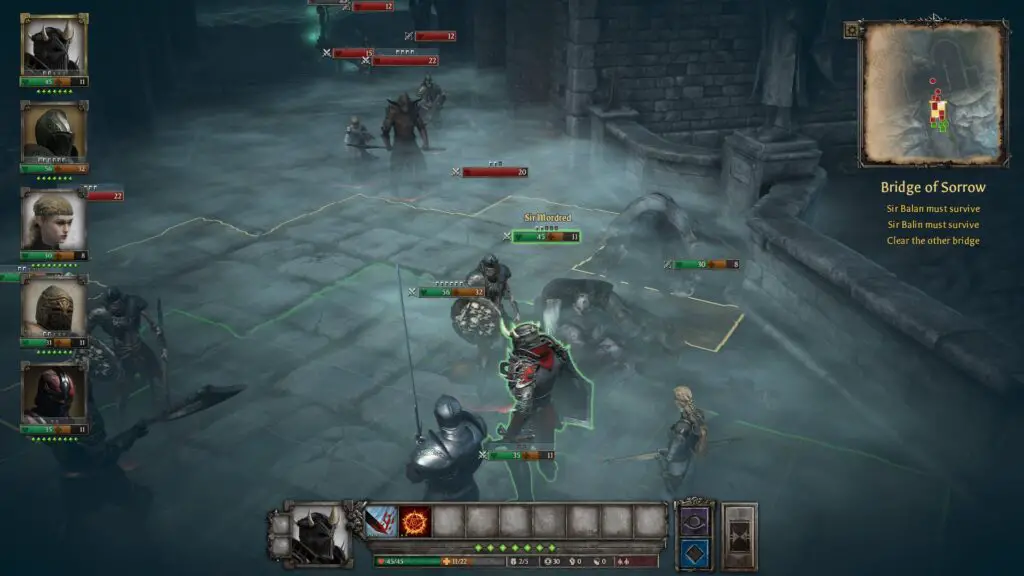
King Arthur: Knight’s Tale is shaping up to be a compelling, challenging tactical game. Loot drops are different in each campaign, which combined with the Morality Chart make for plenty of replay value. There’s even a roguelite mode that disables manual saving for the truly valorous. I tried it – it didn’t end well (getting a mission-critical character killed ended the entire campaign) but it made me want to try again and do better. That’s the mark of a game with the good kind of difficulty.
The long-term campaign structure gives the game a level of noncombat depth that isn’t seen in many tactical games. The early access build, which covers the first of the game’s four acts, has over a dozen missions and their related decision points. Considering how much can happen in just the first act, we can’t wait to see how the greater campaign unfolds. Like the fated return of Arthur, the time will come. Thankfully, you don’t need Merlin’s foresight to know when King Arthur: Knights Tale will emerge from the mists – the game’s release date is 29 March. Look forward to our full review this spring!

